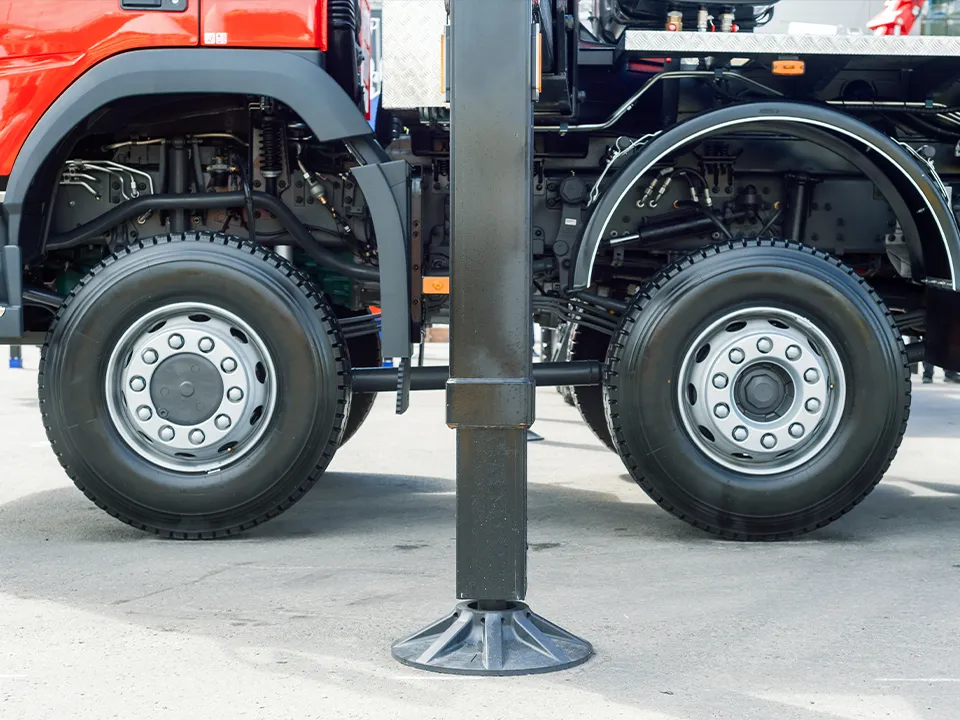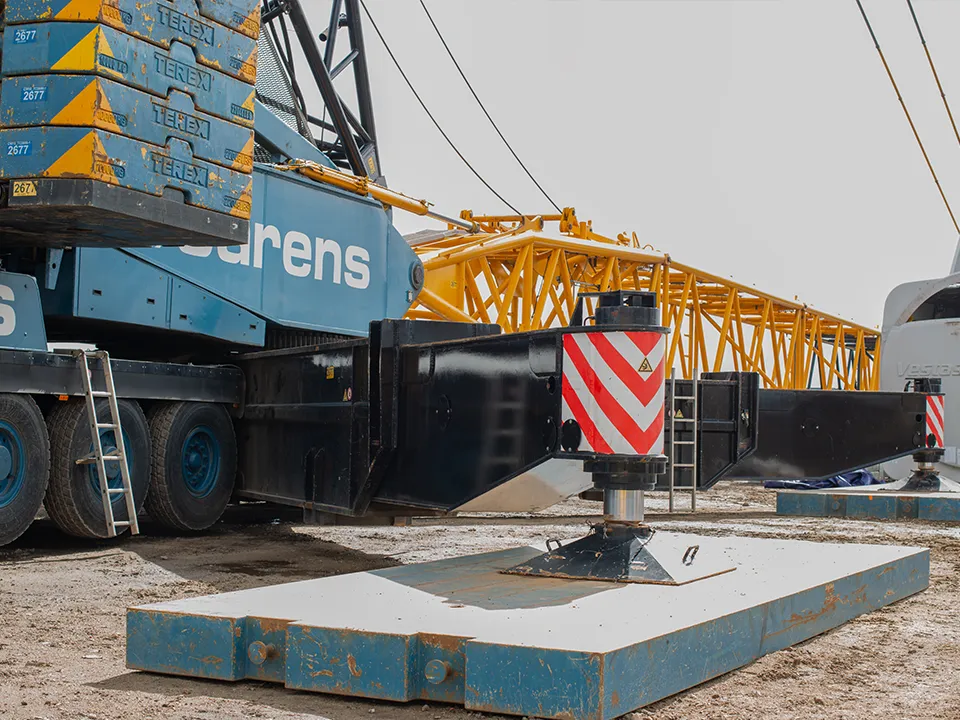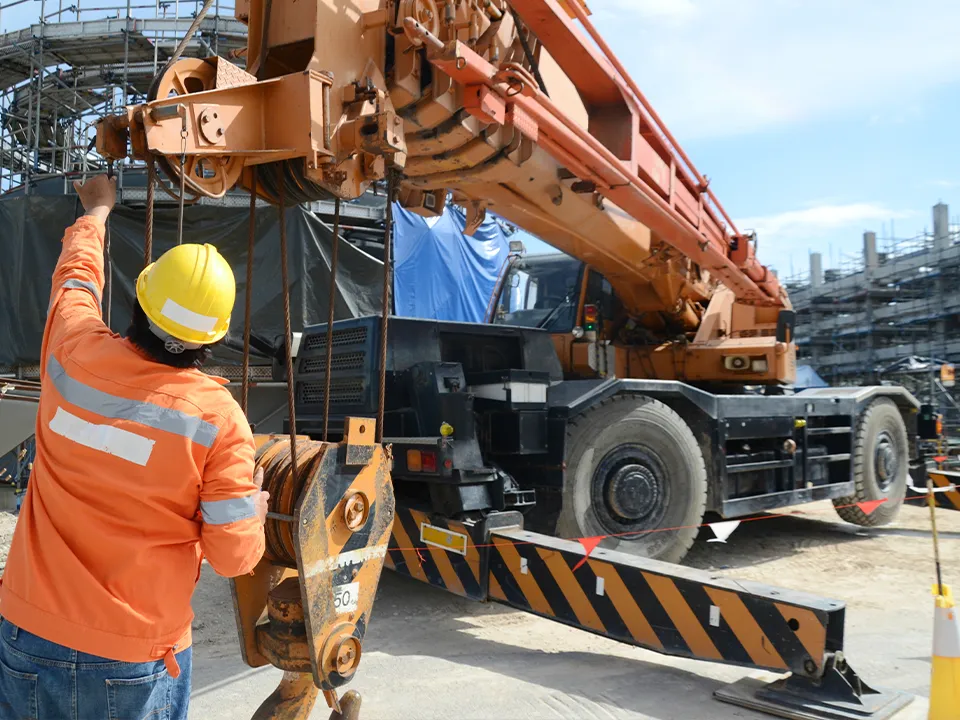

In the intricate realm of crane operations, understanding the crane outrigger pads requirements is not just a recommendation—it's a necessity. AP Crane Training, a beacon of excellence in crane training, has consistently highlighted the profound significance of these requirements. This comprehensive guide will elucidate the nuances of crane outrigger pads, the role of cribbing, and the indispensable nature of outriggers in crane operations, ensuring operators are always on the right track.
Outrigger pads are more than just plates; they are the foundation of crane stability. Positioned beneath the crane's outriggers, these pads are designed to distribute the crane's load over a broader area. This distribution is vital, especially when the crane operates on soft or uneven terrains. By understanding the crane outrigger pads requirements, operators can ensure that the crane remains steadfast and secure during all operations. These pads, often made of durable materials, are specifically designed to withstand immense pressure, ensuring the crane's weight is evenly distributed.

Safety is paramount in crane operations. The right outrigger pads, combined with proper cribbing, can make the difference between a successful lift and a catastrophic accident. Adhering to the crane outrigger pads requirements ensures that the crane doesn't sink or tip over, thereby preventing potential mishaps. Moreover, when operations run smoothly without interruptions, it translates to increased efficiency, timely project completion, and reduced operational costs. Properly chosen and positioned outrigger pads can drastically reduce the chances of mishaps, ensuring the safety of both the operators and the equipment. Outrigger pads aren't just tools for stability; they're a fundamental part of the crane and rigging standards set by industry experts. These standards, which encompass a range of safety and operational guidelines, recognize the critical role that outrigger pads play in ensuring lifts are conducted safely and efficiently.
Beyond the realm of safety and efficiency, outrigger pads serve a crucial environmental and aesthetic purpose. Especially on delicate terrains like asphalt, grass, or landscaped areas, these pads prevent unsightly damage and potential repair costs. By distributing the crane's weight, they ensure that the ground remains unscathed, preserving the integrity of the job site. This not only saves on potential repair costs but also ensures the site remains aesthetically pleasing.
Cribbing is an essential aspect of crane operations, often working hand in hand with outrigger pads. Comprising wooden blocks, metal, or plastic materials, cribbing is strategically placed beneath the outrigger pads to offer additional support. Especially on challenging terrains or when the ground is soft, cribbing ensures that the crane's weight is distributed more evenly, providing an added layer of stability. This practice ensures that the crane remains stable, even in the most challenging conditions.

The world of cribbing is diverse. While traditional wooden cribbing blocks have been a staple in crane operations, modern advancements have introduced metal and durable plastic cribbing. The choice of cribbing material often depends on the crane's weight, the specific ground conditions, and the nature of the lift. For instance, while wooden cribbing might suffice for lighter cranes, heavier cranes might necessitate the strength of metal cribbing. Each type of cribbing has its advantages, and understanding which to use is crucial for safety.
Safety is non-negotiable in crane operations. Using cribbing correctly is not just about ensuring stability; it's about safeguarding lives and property. Incorrect or inadequate cribbing can lead to crane instability, posing significant risks. It's essential to understand the right type, size, and amount of cribbing for each job. Regular training, like that offered by AP Crane Training, ensures operators are well-equipped to make these decisions. Proper cribbing practices can mean the difference between a successful operation and a disastrous one.
Outriggers are the unsung heroes of crane stability. These extendable arms, protruding from the crane's base, play a pivotal role in ensuring the crane remains balanced, especially during heavy lifts. By widening the crane's support base, outriggers, when used in conjunction with the right outrigger pads and cribbing, ensure that the crane remains stable, regardless of the weight it's lifting. Their design and functionality are crucial in ensuring that the crane can operate safely, even under immense loads.

Every crane operator knows the value of outriggers in lifting operations. These components act as a counterbalance, preventing the crane from tipping over during lifts. Properly deployed outriggers, complemented by the right outrigger pads and cribbing, are the bedrock of safe and efficient lifting operations. They ensure that the crane can handle the load, regardless of its magnitude, and that the entire operation runs smoothly from start to finish.
Outriggers, like all mechanical components, are subject to wear and tear. Regular maintenance and inspection are not just recommended—they're essential. Ensuring that outriggers are in optimal condition, free from damage or wear, is crucial for safe crane operations. Regular checks, combined with timely maintenance, can identify potential issues, ensuring they're addressed before they escalate into significant problems. A well-maintained outrigger system ensures longevity and safety in crane operations.
Before embarking on any crane operation, a meticulous assessment of ground conditions is imperative. Factors like soil moisture, ground evenness, and underlying structures can influence the choice of outrigger pads and cribbing. Soft, wet, or uneven terrains might necessitate the use of larger outrigger pads or additional cribbing to ensure stability. A thorough ground assessment ensures that the crane operates on a solid foundation, reducing risks. This step is crucial in ensuring that the crane can operate safely and efficiently, regardless of the external conditions.

The weight of the crane is a determining factor in the selection of appropriate outrigger pads and cribbing. Naturally, heavier cranes demand stronger, more durable support. By considering the crane's weight and matching it with the right pads and cribbing, operators can ensure maximum stability during operations. This balance ensures that the crane can operate safely, even when lifting heavy loads.
At AP Crane Training, we pride ourselves on offering unparalleled guidance on all aspects of crane operations. From selecting the right equipment to understanding the nuances of crane outrigger pads requirements, our training programs are comprehensive. We ensure that crane operators are well-versed in best practices, guaranteeing safety and efficiency on every job site. Our expert trainers bring years of experience to the table, ensuring that every trainee is equipped with the knowledge and skills needed to excel in the field.
Crane operations are a blend of precision, knowledge, and the right equipment. Understanding crane outrigger pads requirements, the role of cribbing, and the importance of outriggers are fundamental to ensuring safety and efficiency. With the insights provided in this guide and the expert training offered by AP Crane Training, crane operators can navigate the complexities of their profession with confidence.
Eager to elevate your crane operations to the next level? Want to ensure you're always adhering to the best practices and safety protocols? Don't leave it to chance. Reach out to AP Crane Training today for expert guidance, training, and insights into the world of crane operations.

An All Purpose Safety Training Solutions Company